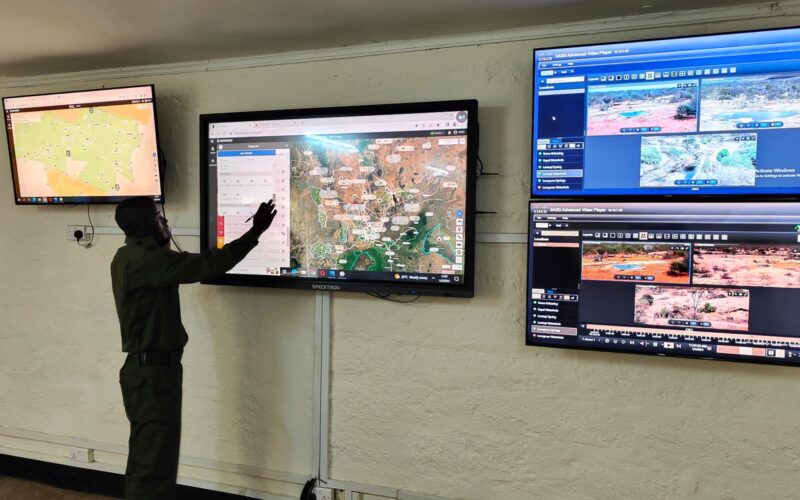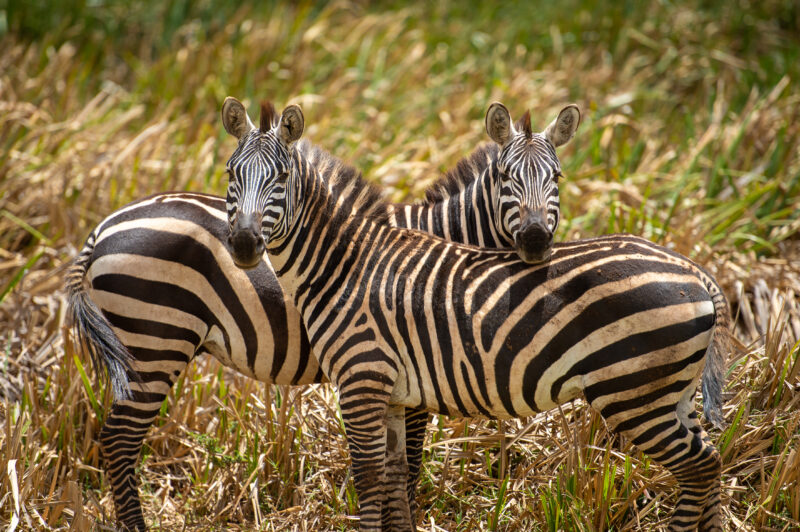February 1, 2023
Since its founding, Lewa’s rhino population has increased from 15 to 255.
Lewa Wildlife Conservancy has been a leading model of successful wildlife protection since 1995. Its achievements in anti-poaching efforts, wildlife conservation, and community building demonstrate what is possible when local leaders, governments, conservation partners, and funders collaborate.
Located in northern Kenya, Lewa was established as 62,000 acres of protected habitat for some of Africa’s most threatened species, including Black rhinos, elephants, lions, cheetahs, giraffes, wild dogs, and the world’s largest single population of Grevy’s zebra. In 2013, Lewa and the neighbouring Borana Conservancy removed the fence that separated them, creating 93,000 continuous acres now known as the Lewa-Borana Landscape (LBL).
‘‘By investing in education, healthcare, micro-enterprise, water and more, [communities] see real, tangible value in conservation.’’
– Edward Ndiritu, Head of Lewa’s Armed Security

A member of Lewa’s security team using EarthRanger, a digital tool that provides real-time wildlife data
Lewa’s conservation success in the LBL has been profound. As the first and leading private rhino sanctuary in East Africa, its rhino population has grown from 15 to 255 rhinos. In the last five years, it saw a 12% increase in elephant populations and one of the world’s highest lion cub survival rates (at 89%). It is also home to 11% of the global Grevy’s zebra population (and one of the few landscapes where Grevy’s foal survival rate is increasing). Many of these outcomes are a direct result of Lewa’s security and anti-poaching programs. With local people operating as field rangers, radio operators, animal keepers, and anti-poaching ranger and tracker dog units, Lewa demonstrates that community is the best first line of defense against poaching and wildlife crime.
Investing in local communities is a critical piece of Lewa’s conservation model, following the national ethos of “Kenyans for Kenyans”. Over the course of 30 years, it has worked to improve healthcare and education access, to provide grants for micro-businesses, to fund infrastructure for agriculture and clean water, and to provide training and meaningful employment. Lewa’s deeply rooted and far-reaching work is summarized in its 2022 Annual Impact Report.

Lewa is home to 11% of the global Grevy’s zebra.
The William H. Donner Foundation (WHDF) has provided just over $165,000 in support of Lewa Wildlife Conservancy since 2019, while its sister foundation, the Donner Canadian Foundation (DCF), has contributed almost $1 million since 2009. WHDF and DCF funding helped Lewa to be the first conservancy to deploy EarthRanger, a digital data tool allowing Lewa, and later Borana Conservancy, and 39 Northern Rangelands Trust (NRT) conservancies, to aggregate significant amounts of data into a single platform, monitoring a landscape of more than 10 million acres in real time. EarthRanger has been so successful that the Kenya Wildlife Service has adopted it to meet the country’s national goal of connecting every protected area to a centralized system.
Recent WHDF and DCF funding has also supported the successful launch of the Subuiga Water Reservoir Project within the Ngare Ndare Forest. The reservoir will have the capacity to harvest and store rainwater, improving water access for 15,000 people and transforming 2,500 acres of land with improved, sustainable irrigation to enhance agricultural yield for small-scale farmers.